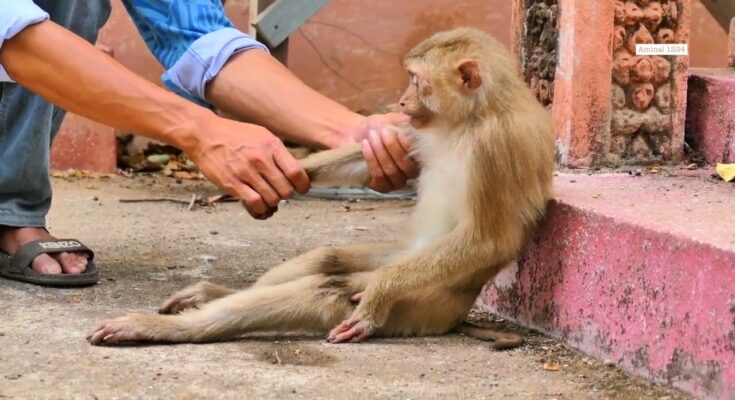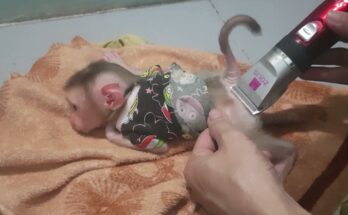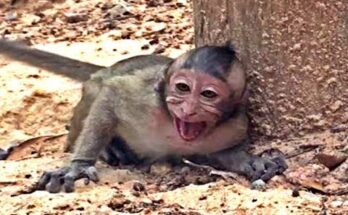In a quiet sanctuary nestled deep within the forest, a young monkey named MOKA captured the hearts of his caretakers and veterinarians alike. MOKA, a lively and curious primate, had always been full of energy—leaping from branch to branch, chattering with his troop, and exploring every inch of his habitat. But over time, his caregivers noticed something troubling. MOKA had started to move differently. His limbs appeared stiff, his posture hunched, and his range of motion noticeably limited. What was once a nimble, agile monkey had become cautious and constrained. After careful observation and veterinary assessments, the diagnosis became clear: MOKA was suffering from severe muscle tightening, a condition that was likely congenital or the result of early injury.
This condition, known in veterinary medicine as muscle contracture, can limit an animal’s mobility, cause discomfort, and affect quality of life. For MOKA, it was impacting his ability to climb, forage, and socialize—core behaviors essential to a monkey’s well-being. The sanctuary’s veterinary team decided on an innovative and delicate surgical procedure: stitching muscle to release the tension and restore flexibility.
The surgery involved identifying the affected muscle groups—primarily around the shoulders and hind legs—and carefully releasing the tightened tissue. Once released, precise sutures were used to reattach the muscles in a lengthened position, allowing for better elasticity and movement. It was a complex and delicate operation, requiring not just surgical skill but an understanding of primate anatomy and behavior.
Recovery was gradual but heartening. With the support of post-operative physical therapy, including gentle stretching, guided climbing, and enrichment activities, MOKA began to regain his strength and confidence. His movements became more fluid, his curiosity returned, and he started interacting playfully with his surroundings again.
This story of helping monkey MOKA through muscle-stitching surgery is a testament to the evolving relationship between humans and wildlife. It highlights the importance of compassion, innovation, and dedicated care in animal rehabilitation. MOKA’s journey is more than a medical success—it’s a reminder that every creature deserves a chance at a full and happy life, and sometimes, that means stitching muscles with hope and healing.



